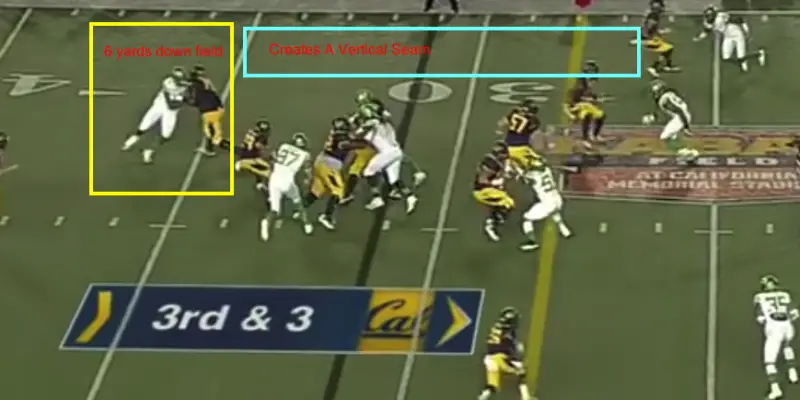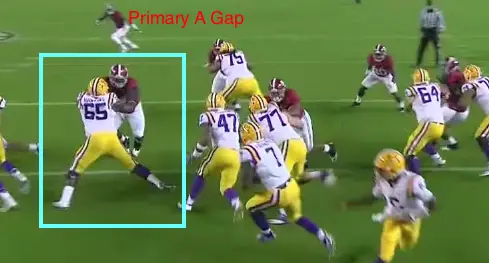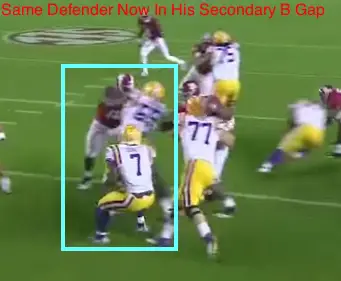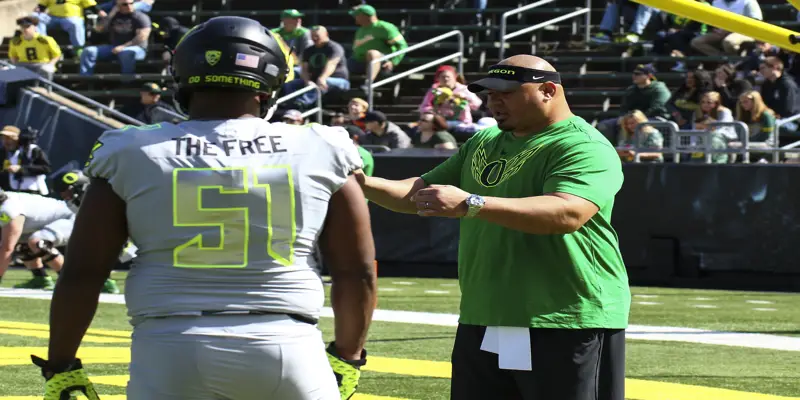In my last article, Oregon’s New Edge on Defense, we went over the importance of setting the edge in run defense. Building on that, I am creating a mini-series on how to improve run defense, to give people a look at the fundamentals necessary to play the run well, and at the same time, examine the fundamentals missing from the Duck defense last year.
Defensively, it all starts with good defensive line play. Everybody talks about sacks and getting to the quarterback, but the truth is, if you can’t stop the run you are never going to be in a position to get sacks. Teams will simply run all over you. A team must play good run defense on first and second down to get the offense into obvious passing situations; then it can pin its ears back and get after the quarterback.
Watching Oregon’s film last year, the defensive line looks to be rushing the passer, shooting gaps and getting up the field on every down. The problem is that this creates massive running lanes and too many numbers advantages for opposing offenses.
Above is some game film versus Cal, a team not known for being a smash mouth run team like a Stanford or Alabama. This is where Oregon’s lack of defensive line technique and philosophy really showed up. They gave up 311 rushing yards to Cal, doubling their season average of 154 rushing yards per game.

Undisciplined Technique
What we see on this play is the Oregon defensive linemen playing (yellow outline) one gap technique, meaning he is in charge of manning the “B gap” between the offensive guard and tackle. When the ball is snapped, his responsibility includes anything that comes into his gap.
Some coaches (apparently Brady Hoke) think this is the proper way to play one-gap principles. Get in your gap and shoot up field, but the 2016 season shows the worst-case scenario of what happens when you play with poor technique.
You see the defender shoot up field, and the offense executes a zone run play, incidentally the most common run play in college football. Usually, the blocker will try to hook, or reach the defender and seal him inside, but because this defender is playing reckless, all the offensive lineman has to do is to get in between the defender and the ball carrier. The Oregon defender has done the offensive lineman’s job for him by running himself out of the play, giving the ball carrier an easy read.
Run play after run play Oregon lineman shoot up field trying to make a play that is not there, and in doing so, leave an open running lane exposed in their vacated gap. This happened multiple times during the Cal game.
Note: In addition to the poor technique from the defender highlighted above, you will also notice two unblocked defenders completely miss the ball carrier on what would have been a stop short of the first down. Instead, the runner gets 13 more yards after the missed tackle. Poor line technique plus bad tackling makes for a long season.
The fix is on the way though, as the new staff has already implemented new techniques along the defensive line. Instead of having the lineman shoot up field through their assigned gap, the defensive linemen will be asked to stay along the line of scrimmage and play two gaps.
I personally believe two gapping is the most fundamental way to play run defense because it allows the defense to add extra defenders to the ball by giving defensive lineman the freedom to play both sides of their primary blocker. In making this switch, it will allow the defense to get into more predictable passing situations where they can they get after the quarterback.

Ducks D-Line Showing Good Two Gap Technique in the Spring
The main difference between last year’s technique and this year’s technique will be the eyes. In a two-gapping technique the defender will still have a primary gap he is responsible for, not unlike a one-gap scheme.
We will use the “A gap” as the primary gap for this example. The defender will come off the ball staying square, extend his arms, and his body will physically be in the A gap between the center and guard (see below). His eyes will be on the ball carrier, and he will control and feel the blocker with his hands. If the ball carrier declares to their A gap or further outside, the defender will get off the block by ripping with his inside arm through the outside arm of the blocker.
Here is where the rubber meets the road in two gapping: when the defender is in the A gap and has position with his eyes properly on the ball carrier, and the ball declares outside to the B gap, the defender must then takes his outside arm, grab the blocker’s outside elbow, and rip across the blocker’s body to the B gap. This is how the defense can get extra defenders to the point of attack.

Perfect Primary Gap Technique
The defender must use his eyes once he is in position, then feel and control the blocker, all without looking at the blocker that is in front of him.

Reads the Runner and Plugs His Secondary Gap
The defender highlighted in blue above controls both gaps here. His eyes and body start out in his primary A gap, all the while watching the ball carrier. Once the runner declares the defender changes his gap.
The video above is a textbook example of two-gap technique. The defender’s eyes and body position are excellent. Not only does he control both the A and B gaps, watch at the very end as he gets back to his original A gap for a third gap defended on one play. This is interior run stopping technique at its best.
Oregon fans have a lot to be excited about next year, the one area I am most excited about is watching the run defense get stops, which will allow the potent Duck offense more time on the field. Ducks fans are long overdue for some good run defense in Eugene, and I think we are in store for some positive changes this season.
Coach Ruskin Fiegenbaum
Beaverton, Oregon
Ruskin has been following the Ducks since the ’94 Rose Bowl. He graduated from the University of Oregon in 2007 and has been coaching football in the Portland-Metro area since 2008.

